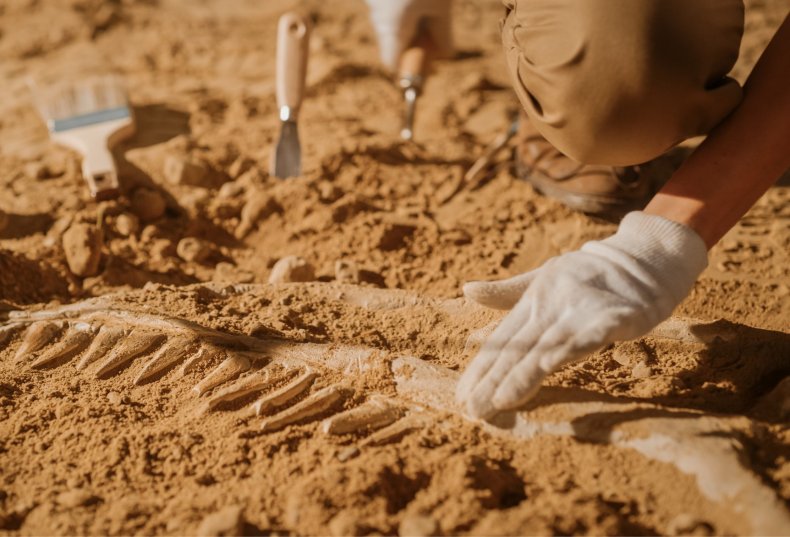A Nebraska man’s fishing trip turned out to be more eventful than expected after he hooked a 90-million-year-old fossil.
The fisherman, Andy Moore, made the accidental discovery earlier this month while taking part in a Missouri River fishing tournament
Moore, an avid angler, hadn’t been having the best day when he snagged his hook on what he thought was a rock after a “horrible cast,” he told Omaha news station KETV.
After paddling his kayak over to free the line, Moore discovered what he initially believed was a skeleton belonging to some type of animal that had died relatively recently. He snapped a photo of it and returned to the tournament.

Afterward, he posted his tournament photos online. It wasn’t long before people got in touch to point out that there was more to the skeleton than Moore had realized.
Moore told KETV: “I have a friend DM me, a couple, going, ‘Dude, did you know that’s a 90-million-year-old fossil?’”
The fisherman decided to reach out to the Army Corps of Engineers, which controls the river bed. They immediately passed his photo on to a geologist. Soon, Moore and the geologist were on their way back to the site where the fossil was discovered, thanks to GPS data in the image.
According to Moore, the geologist said “Oh my God” upon seeing the fossil for himself, which turned out to be from a 90-million-year-old bulldog fish.
Known formally as Xiphactinus audax, it was a huge fish that occupied the waters of the Western Interior Seaway, a body of water that split North America into two as far back as 100 million years ago. The fish had large, upward-opening jaws and jagged teeth, which led to their modern nickname.
The Dino Of The Week blog states that some of the longest bulldog fish may have measured up to 20 feet in size, according to some estimates.
Bulldog fish fossils may be quite valuable. One complete framed specimen once sold for $107,100 at Sotheby’s auction house, though this fell short of the $125,000 to $175,000 estimate.
Most animals become fossilized by being buried in sediment, with their hard skeleton leaving an imprint before they decompose. The fossil found by Moore is due to be dried and displayed at the Lewis and Clark Visitor Center museum in Crofton, Nebraska, according to KETV.